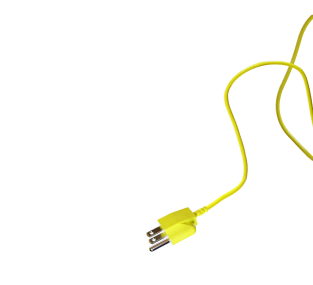Current depression treatments go a long way toward helping symptoms. But they may not help everyone.
Antidepressants
Aim to balance the chemicals in the brain—like dopamine and serotonin—that help different parts of the brain communicate with each other. If these chemicals are properly balanced, they're able to regulate mood and emotion.
Talk therapy
Helps people with depression learn how to challenge their current thought processes so that their brain learns and adapts to new ways of thinking.
Despite treatment, some people with
depression may not see results
In one study
on antidepressants
In another study
about talk therapy
*In a study of 3,671 people taking commonly used antidepressants.
†Across 5 studies, the results of 660 adults who participated in talk therapy without receiving any other form of treatment for
depression, like antidepressants, were compared with the results of people who didn’t receive any treatment for depression.
The disconnection in depression and how it may be addressed
Some people with depression are getting results from existing treatments, but not enough.
For a long time, healthcare providers worked from research showing that depression is caused by a chemical imbalance. Antidepressants are thought to work by targeting that imbalance.
Talk therapy focuses more on the behavioral aspects of mental health. And some less common procedures activate the brain directly with electricity and magnetic fields.
But if new research is right, and depression is more than just a chemical imbalance, then maybe it’s time to look for additional approaches to help with symptoms.
Depression is more than a chemical imbalance. So what is it?
New research is revealing that depression may also be caused by disruptions in neural networks.
Our brains are made up of networks that help parts of our brain communicate
Neurons communicate with one another using both chemical and electrical signals.
Neurotransmitters are the brain’s messengers. When neurons are activated, they release neurotransmitters. Neurons are organized into neural networks that connect parts of the brain to one another. The neurotransmitters released by neurons play an important role in carrying messages across networks within the brain.
How the neural networks are connected can impact the way parts of the brain work together to respond to information and events. The coordination of these neural network connections can impact how we process and experience our world.

How neural networks affect us
Researchers are still learning more about how the networks in our brain work. Here are some examples of how disruptions in neural networks might affect a person with depression:
| The network involved with... | ...may cause these symptoms when not well connected |
|---|---|
| Resting and reflection |
|
| Memory and attention |
|
| Noticing and responding to changes |
|
The network that causes negative thinking
Disconnects in one particular network cause the “thinking” part of the brain to be underactive. The “thinking” part of the brain has a hard time sending messages to the “feeling” part of the brain, which is more active than it should be. They are out of sync.
When the “thinking” and “feeling” parts of the brain don't connect, negative thoughts can take over. That's because the “thinking” part can't help the “feeling” part adjust and control emotions.
This may cause repetitive negative thoughts
The disrupted connections between these parts of the brain mean that
messages sent by the “feeling” part aren't being balanced by messages from the
“thinking” part—so negative thoughts can loop over and over.
The brain can change. Can we
train it to get better?
For people living with depression, focused practice can help retrain the networks in the brain that are out of sync.
This offers hope that the brain's networks can be repaired. When neural network connections are strengthened, the brain can get better at controlling emotions.

The brain has a natural ability to change over time
The brain’s ability to change over time, usually by learning and adapting, is called neuroplasticity. Our brains change rapidly when we are younger. They are slower to change in adulthood—but change is still possible.
Repeating certain activities can strengthen connections in neural networks. The more a pathway sends signals, the easier it is to do so in the future. This is thought to be the way that neural networks develop.
What neuroplasticity could mean for treatment
As we continue to learn more about the brain and depression, researchers hope to use the brain’s neuroplasticity—or ability to change—to treat symptoms of depression. Knowing how the process of neuroplasticity works can help guide ways to “rewire” certain networks in the brain that are disrupted. For example, mental exercises could be designed to target and activate certain neural networks to make their connection stronger.

How can people with depression train the brain to strengthen neural networks and change for the better?
A key idea in neuroplasticity is that repeating certain behaviors improves connections between parts of the brain. This can make change happen faster.
Brain exercises are similar to physical therapy. Physical therapy exercises focus on specific muscles to help with balance, strength, and flexibility. An innovative type of brain exercise focuses on training specific parts of the brain to work together. This may help people with depression better control their emotional responses and reduce repetitive negative thoughts.
How does brain training work?
Certain exercises can light up certain parts of the brain and use the brain’s natural ability to change. For example:
- Playing memory games can light up the “thinking” part of the brain
- Identifying emotions on faces lights up the “feeling” part of the brain
When these 2 parts of the brain light up together, the network that connects them can become stronger, making them capable of working together better.
As experts say, “neurons that fire together, wire together!”
